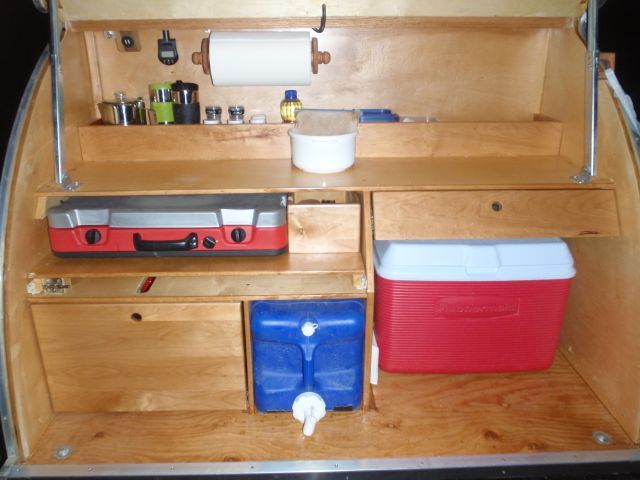Bulkheads: Solid vs. Sandwiched
I've pretty much settled on sandwiching my walls for insulation value, but am still on the fence regarding my rear bulkheads.
Each one is relatively small, 1.5x5 ft. and 1.75x 5 feet. Is there even a point to doing these sandwiched? If my calculations are correct regarding weight, each one (if solid 3/4") would come out to only 17.5 and 20 lbs.

Since the walls, hatch, and floor will be sandwiched, is it safe to save some time and potential screw ups by just going with the solid ply? This will be a four seasons teardrop, just making sure i'm not missing anything here.
Each one is relatively small, 1.5x5 ft. and 1.75x 5 feet. Is there even a point to doing these sandwiched? If my calculations are correct regarding weight, each one (if solid 3/4") would come out to only 17.5 and 20 lbs.

Since the walls, hatch, and floor will be sandwiched, is it safe to save some time and potential screw ups by just going with the solid ply? This will be a four seasons teardrop, just making sure i'm not missing anything here.
